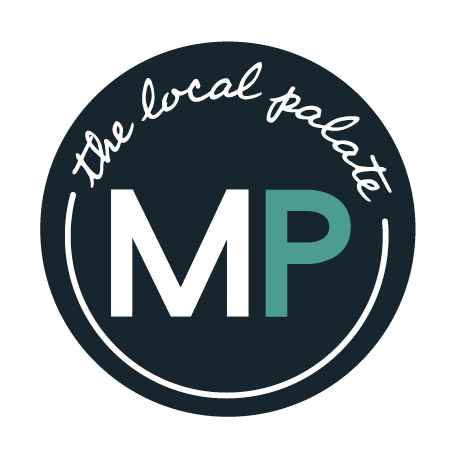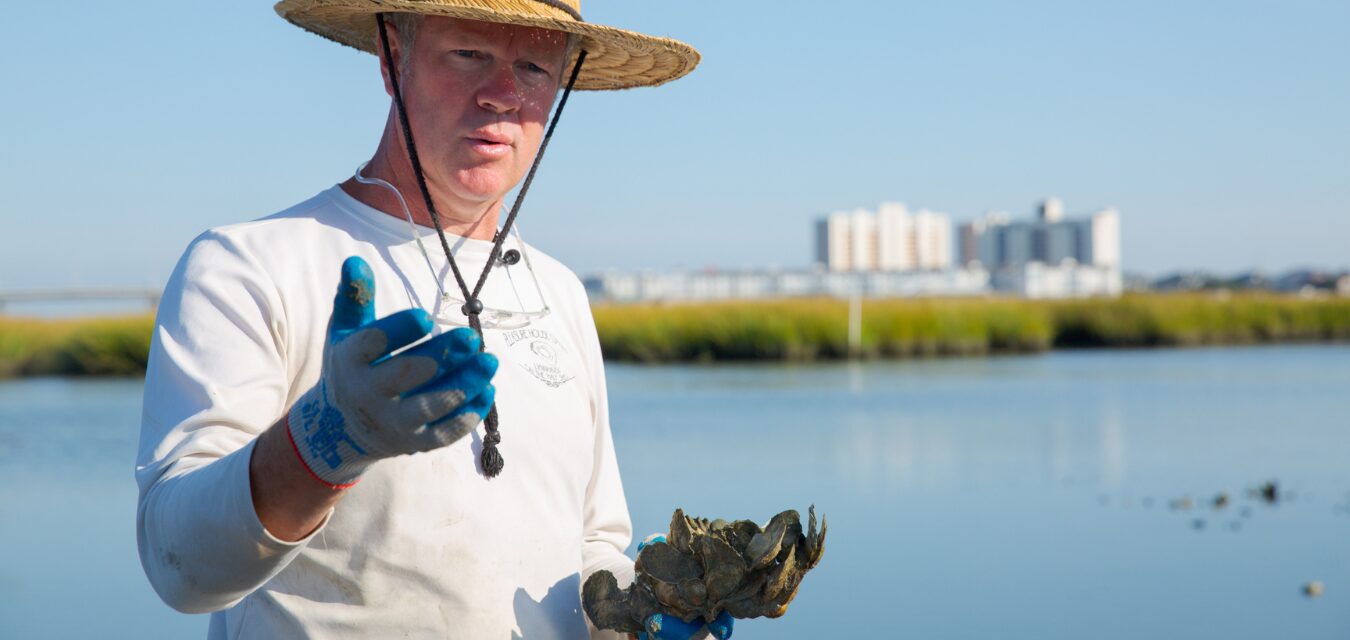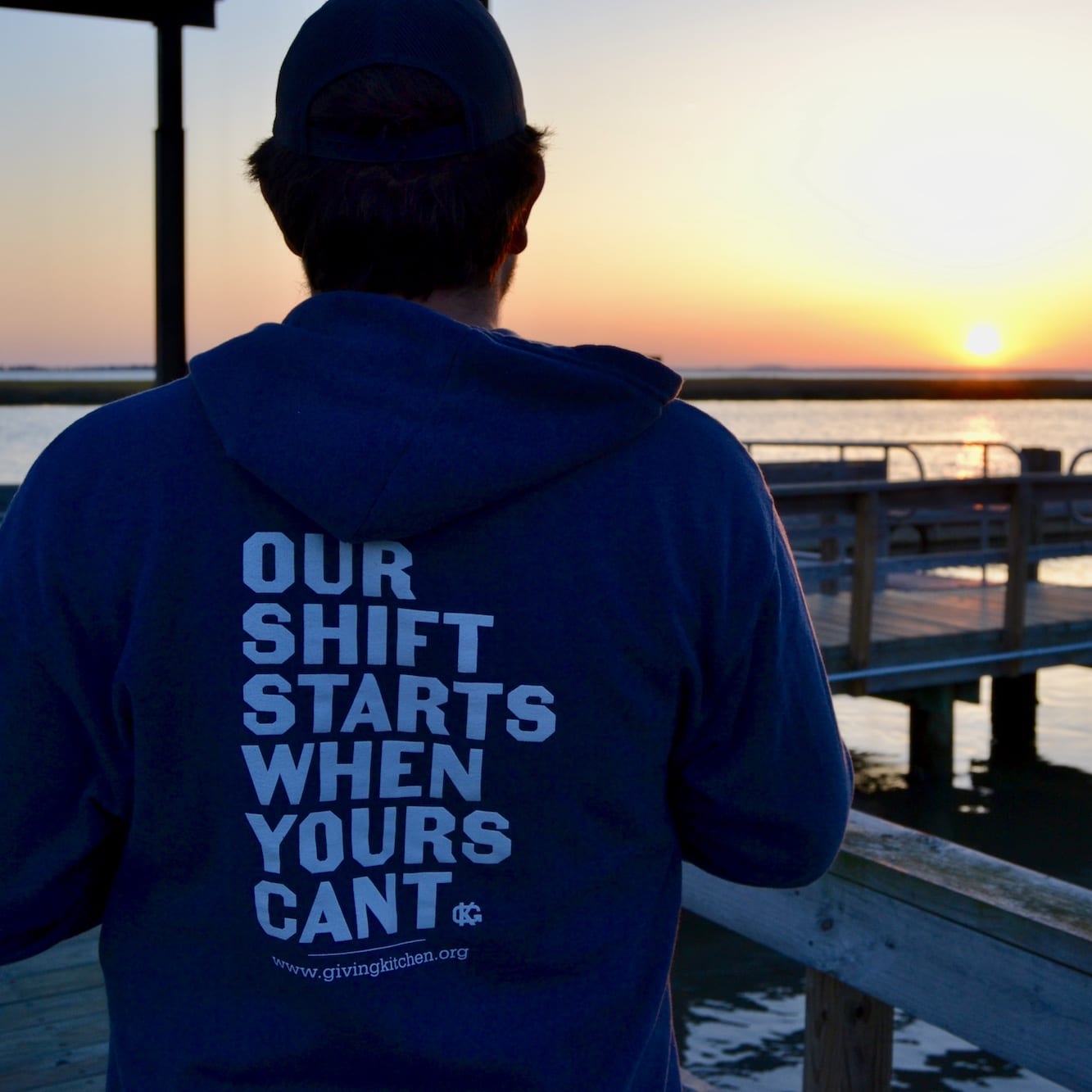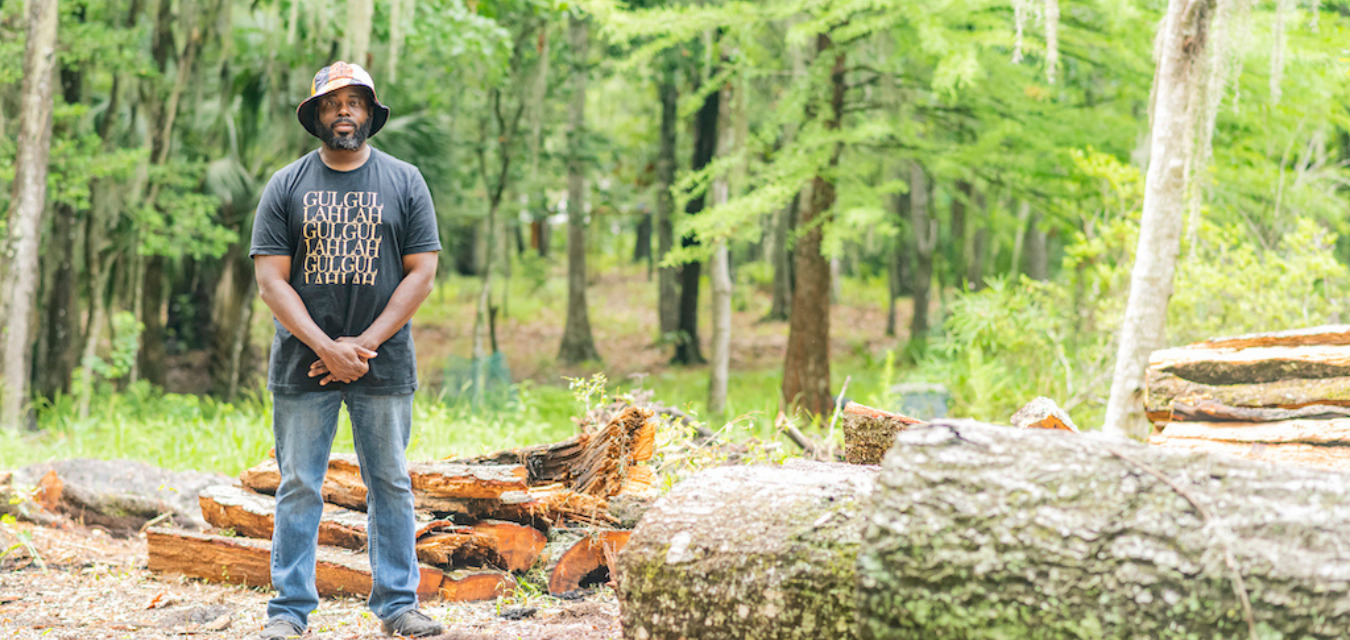A former fireboat captain returns to the water as a Lynnhaven oyster farmer and tour guide
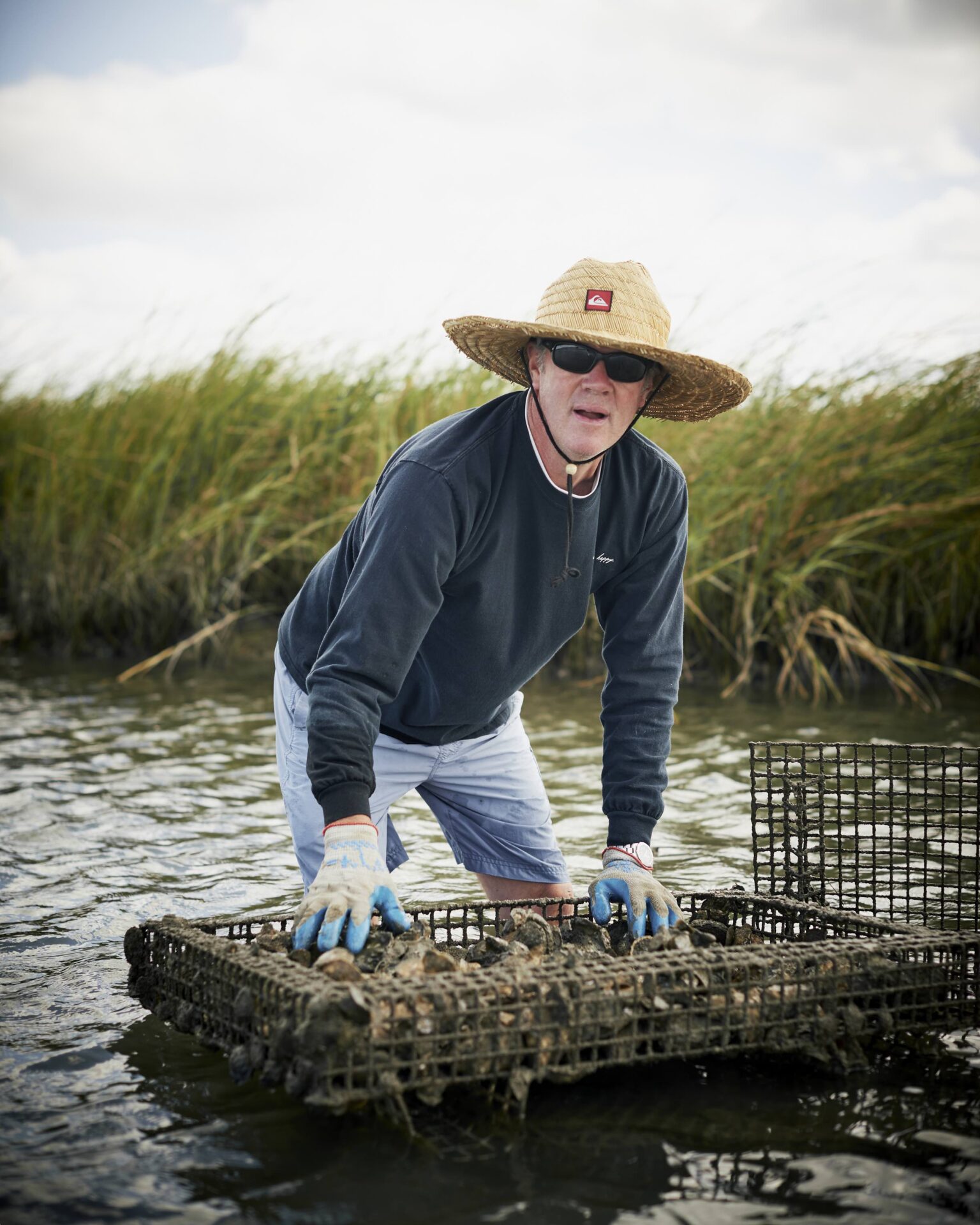
The Lynnhaven River runs through Chris Ludford like a vein. The 53-year-old oysterman behind Pleasure House Oysters in Virginia Beach, Virginia, first sold minnows as bait to tackle shops as a kid, and that got him hooked on the idea of making a living off the water. Throughout his career as a fireboat captain for the Virginia Beach Fire Department, Ludford has always felt the pull of the tides. Now retired, he has returned to the river yet again, hosting oyster tours for anyone who cares to learn about the Lynnhaven and its legendary eponymous oysters.
The Lynnhaven is a special oyster—slightly sweet with a pop of salt, it’s the taste of a sea breeze, clean and simple. Once the gold standard for oysters on the half shell, around the turn of the 20th century, the Lynnhaven was beloved by presidents, royalty, and business moguls. The recorded history of the Lynnhaven oyster dates back to the 1600s, when the first British colonists marveled at the plump, briny bivalves as they stopped at the Lynnhaven inlet, a natural anchorage in the Chesapeake Bay. From there, the oysters made their way from Virginia Beach to Norfolk, where they were sold around the world to a ravenous audience.
But harvest pressure and pollution eventually began to erase the Lynnhaven from raw bar menus. According to the Chesapeake Bay Foundation, by 1990, Lynnhaven oysters were down to 1 percent of their historic levels, and by 2006, the Lynnhaven was condemned for shellfish harvesting due to bacteria levels. Environmental groups worked to clean up the river, and by 2008, the state began offering grants to local crabbers to encourage them to turn, instead, to oyster farming.
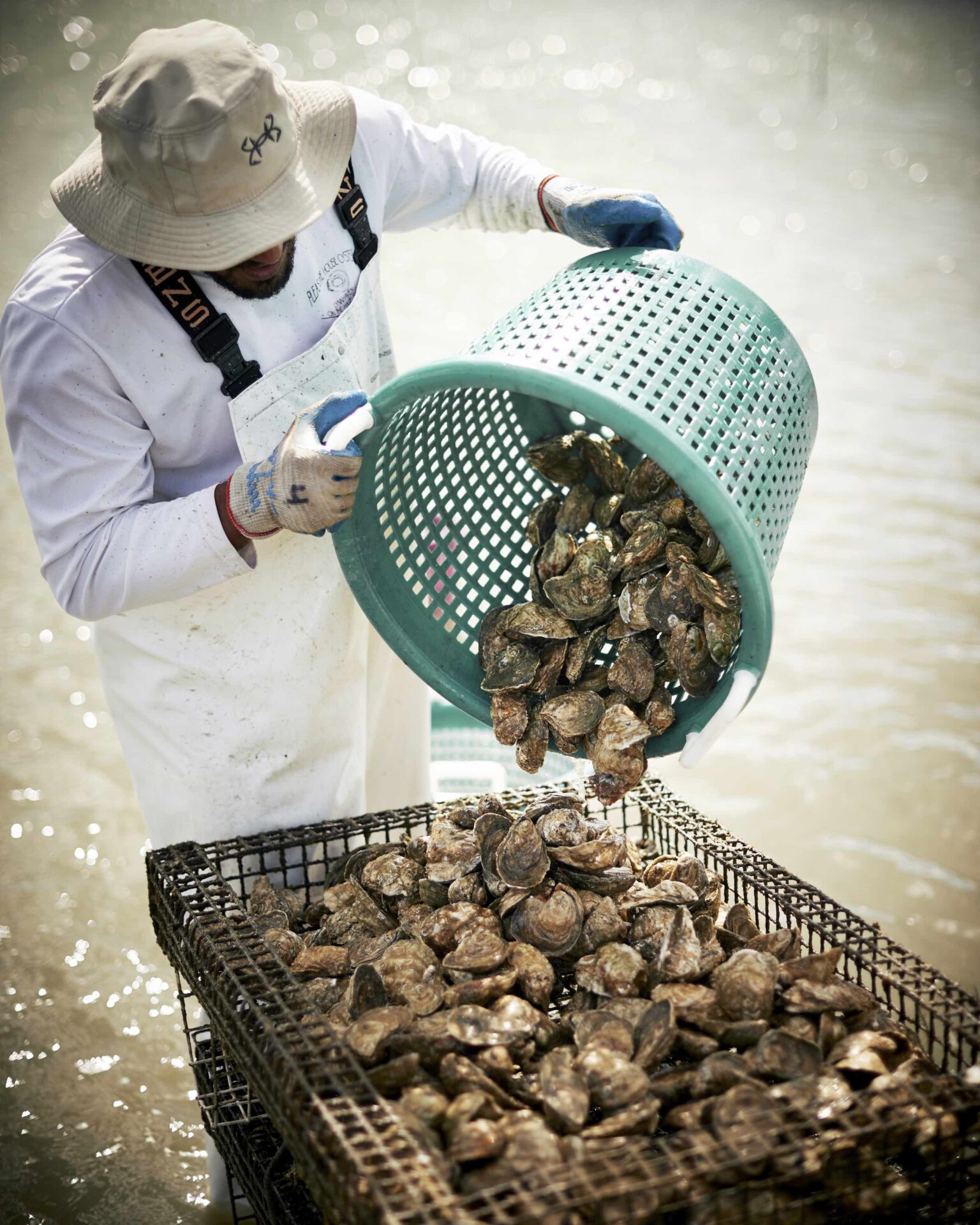
Now one of about five farmers growing the Lynnhaven oyster, Ludford was among the first to be awarded a startup package with cages, gear, and 50,000 oyster seeds in 2009. Within a couple of weeks, Ludford saw the growth—double, triple, quadruple the size of the spats they’d planted—and that was enough to encourage him to ask for another 50,000 seeds. Ludford was told that about half of his seeds would die before reaching maturity, and a close call with an infestation of sea grapes nearly took out the entire operation, but by 2010, Ludford had oysters to sell.
“I pride myself on a handcrafted oyster,” Ludford explains. “Because of a reputation that I’m chasing—a dream, a legend—I feel obligated to grow less but at a higher quality.” Ludford forgoes mechanical tumblers, instead hand tumbling oysters to the perfect size and cup shape. Rather than using pressure washers, which bring gas and noise to the calm waters, Ludford washes his cages on a sandbar by hand, drying them in the sun. The only motor you’ll find in the entire operation is the one on Ludford’s boat.
It was by chance that Ludford ended up leading oyster tours. Rodney Einhorn, chef and owner of Terrapin Restaurant in Virginia Beach, was an early Pleasure House customer. After taking Einhorn’s staff out on the water and serving oysters boatside to the team in 2012, Ludford, who already had a captain’s license, quickly recognized the potential for the tours—an aquaculture equivalent to other agritourism that was doing well around the state. Now, Ludford hosts three types of tours—a two-hour tasting tour where guests learn about the farming process, culminating in a sampling of oysters; a chef’s table, which features a three-course meal plucked from the water; and the watermen tour, which allows families and groups to pull crab pots and dig for clams.
“You’re out there at a table on a sandbar standing in ankle-to-knee-deep water with the sun shining on you, with the beautiful river, fish swimming all around you and egrets and ospreys and oystercatchers,” says Ludford, who hosts tours on weekdays to avoid the weekend crowds. “We’ve got the river to ourselves.”
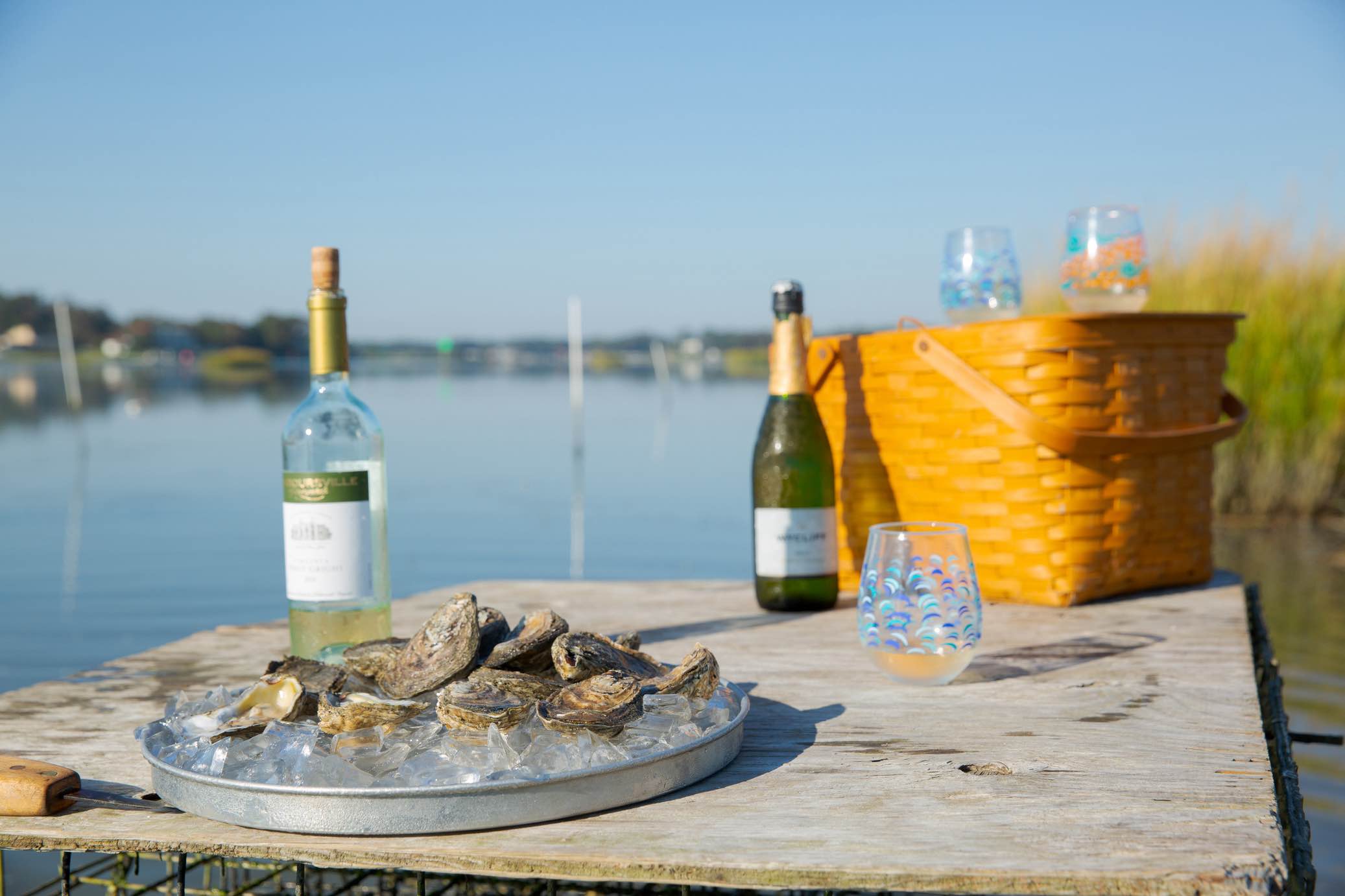
With these captive audiences, Ludford shares his vast knowledge of the Lynnhaven, from the oyster’s role in preserving the Chesapeake Bay to the best way to shuck one. Ludford says he hopes that tourgoers develop an understanding of their own role in water conservation. “I want people to see that the problem is us. It’s development,” he says. “So the thing I would like them to realize is how much of a role they play in water quality, and then how much of a role they can play in fixing water quality. Because I’m very truthful with them. Sometimes it’s difficult to hear, but I still tell it.”
Ludford is old school. Though you may find out about his oyster tours on Google, you’ll need to pick up the phone and call him to schedule one. That’s because his attention to detail demands that he talk each guest through the experience personally before they ever come on board. And when you do set foot on Ludford’s 25-foot Carolina Skiff, he says, “It’s like going back in time. You’re gonna learn how the moon affects your plants and your house and your kids, and you’re going to learn how the tides shape the calendar.” It’s the kind of experience that encourages epiphanies. “I get to weave in a lot of environmental messages and water quality messages. And it happens just naturally, as the tour is going on. When you’re out there on the water, it takes on new meaning.”
keep reading
Roots
By Exploring His Family Tree, Lawrence Weeks Goes Back to His Roots
Lawrence Weeks, Louisville chef at North of Bourbon, discusses the exploration of his family tree where inspiration hangs on every branch.
Roots
Cultivators: Giving Kitchen
The food industry-supporting, Georgia-based nonprofit Giving Kitchen is turning its eye toward substance abuse recovery–and a major expansion.
Cookbook Club
BJ Dennis: The Gullah Griot
Chef BJ Dennis honors his West African and Gullah ancestors by dismantling narratives and sharing traditions by way of food.

